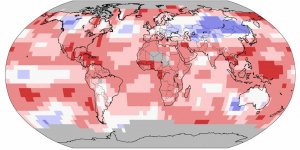| News / Science News |
Catalog of Known Near-Earth Asteroids Tops 15,000
The number of discovered near-Earth asteroids (NEAs) now tops 15,000, with an average of 30 new discoveries added each week. This milestone marks a 50 percent increase in the number of known NEAs since 2013, when discoveries reached 10,000 in August of that year.

The 15,000th near-Earth asteroid discovered is designated 2016 TB57. It was discovered on Oct. 13, 2016, by observers at the Mount Lemmon Survey, an element of the NASA-funded Catalina Sky Survey in Tucson, Arizona. ![]()
The 15,000th near-Earth asteroid is designated 2016 TB57. It was discovered on Oct. 13 by observers at the Mount Lemmon Survey, an element of the NASA-funded Catalina Sky Survey in Tucson, Arizona.
2016 TB57 is a rather small asteroid -- about 50 to 115 feet (16 to 36 meters) in size -- that will come closest to Earth on Oct. 31 at just beyond five times the distance of the moon. It will safely pass Earth.
A near-Earth asteroid is defined as one whose orbit periodically brings it within approximately 1.3 times Earth's average distance to the sun -- that is within 121 million miles (195 million kilometers) -- of the sun (Earth's average distance to the sun is about 93 million miles, or 150 million kilometers).
This distance also then brings the asteroid within roughly 30 million miles (50 million kilometers) of Earth's orbit.
Observers have already discovered more than 90 percent of the estimated population of the large NEOs -- those larger than 0.6 miles (one kilometer).
The rising rate of discovery is due to dedicated NEO surveys and upgraded telescopes coming online in recent years. It is estimated by astronomers that only about 27 percent of the NEAs that are 460 feet (140 meters) and larger have been found to date. (NASA)
YOU MAY ALSO LIKE




